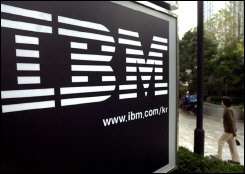IBM Makes First Cell Computer Generally Available

IBM today announced that it is making its first computing system based on the Cell Broadband Engine (Cell BE) generally available on a global basis, with early adopters such as University of Manchester, RapidMind, Inc. and Fraunhofer Institute deploying compute-intensive applications on early ship versions.
The IBM BladeCenter QS20 is a Cell BE-based blade system designed for businesses that can benefit from high performance computing power and the unique capabilities of the Cell BE processor to run graphic-intensive applications. The IBM BladeCenter QS20 will expand the use of Cell into industries such as medical imaging, aerospace, defense, digital animation, communications and oil and gas -- with the ability to dramatically transform those industries.
Based on the Power Architecture, the Cell BE was originally developed by IBM, Sony and Toshiba for use in gaming consoles. Cell BE's breakthrough multi-core architecture and ultra high-speed communications capabilities deliver vastly improved, real-time response effectively delivering 'supercomputer-like performance' by incorporating IBM's advanced multi-processing technologies usually reserved for the company's most sophisticated servers.
Beta versions of the IBM BladeCenter QS20 are already in use at customer sites across the U.S., as well as in the United Kingdom, Spain, Germany, France, Japan and Korea.
Early deployments include the University of Manchester, the United Kingdom's largest single-site university, which boasts a research computing division that is among the world leaders -- with the goal to provide world class, leading high performance computational facilities to staff and students at the University. "We are early adopters of the IBM BladeCenter QS20 because it has the potential to give us significantly improved performance, take up less space, and consume less power," said W. T. Hewitt, Director of Research Computing, University of Manchester. "High performance computing systems built from blade systems based on the Cell Broadband Engine have the potential to change the economics associated with supercomputing, and thus we are looking at migrating the range of our scientific applications including bio-informatics, molecular modeling and engineering applications onto the systems to dramatically improve their performance, at the same time as reducing our costs."
Another early adopter is RapidMind, Inc., a Waterloo, Canada-based development platform company which enables software developers to quickly and effectively take advantage of a new generation of high performance processors. "The IBM BladeCenter QS20 offers our customers the opportunity to continue to use the simplicity of the RapidMind Development Platform while leveraging the performance of the Cell Broadband Engine," said Ray DePaul, President & CEO of RapidMind Inc. "Application vendors are eager to adopt new innovations that drive performance benefits and the new Cell-based system from IBM is proving to be extremely effective at workloads such as image processing."
Fraunhofer Institute for Industrial Mathematics is a German-based research institution, specializing in providing high performance computing research results in mathematics, material research, and mechanical engineering to industries across the globe. "We are using IBM's new BladeCenter QS20 as an ideal platform to develop software for emerging multicore system, and dramatically improve our own in house visualization applications," said Dr. Franz-Josef Pfreundt, Head of the Competence Center for HPC and Visualization, Fraunhofer Institute for Industrial Mathematics. "The powerful development environment allows for our Institute to run mathematical, medical visualization and GraPA based in-house applications at lightning-fast speed, processing millions of pieces of data in just seconds -- allowing us to process, interpret and deliver research results faster."
The IBM BladeCenter QS20 system will rely on the Cell BE processor to accelerate computationally intense workloads associated other specific industry needs, such as 3D animation rendering, compression, and encryption, and seismic and medical imaging to help companies create and run highly visual, immersive, real-time applications.
Source: IBM





















